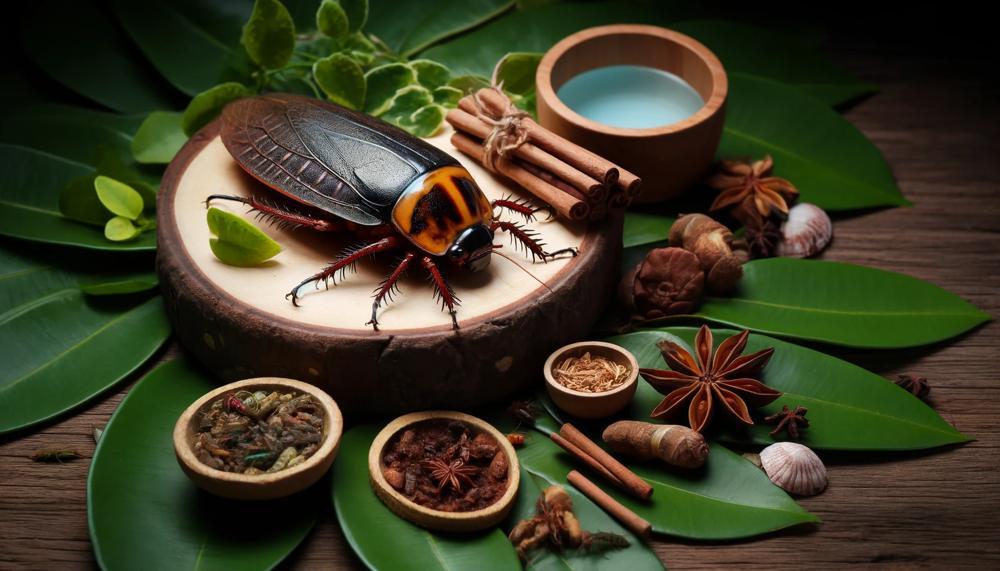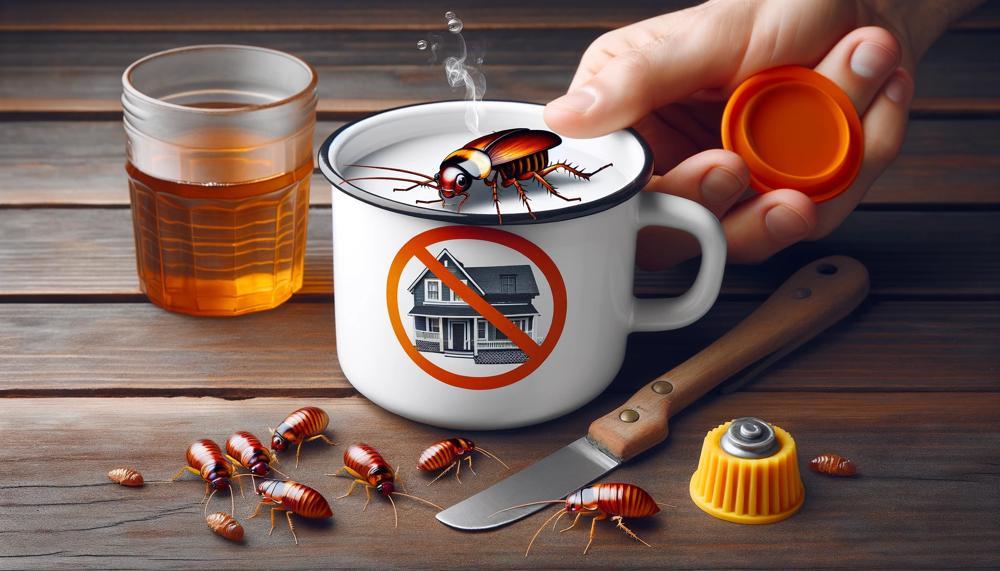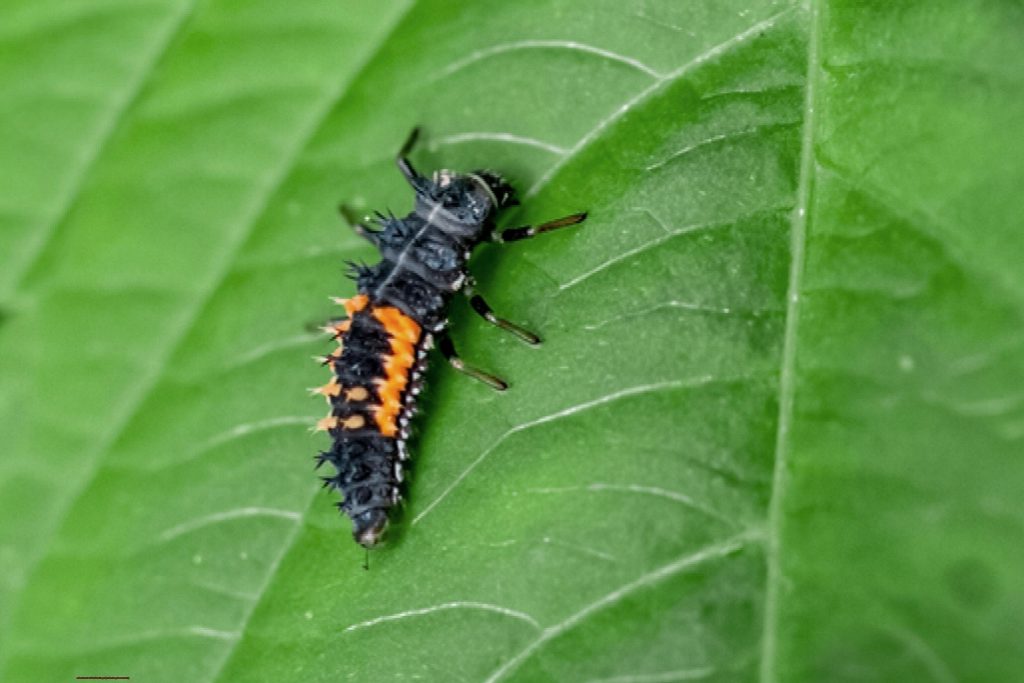What did you know about tree roaches? Some species can glide through the air up to 50 feet from trees to get into your outdoor living spaces. It is a scary thought, especially on warm, pleasant nights when all you want to do is relax outside in the fresh air.
People often mistake tree roaches for their indoor cousins due to their large size and scary appearance. They are not only a nuisance, but they can also be bad for your yard’s health.
Learn more about tree bugs in this informative blog post. We’ll look at natural and effective ways to get rid of them without using harsh chemicals.
So, how to get rid of tree roaches naturally?
Getting rid of tree roaches naturally can be achieved through the following methods:
- Baking Soda and Sugar: A simple yet effective mixture.
- Boric Acid: Boric acid can be purchased in stores or online, and this is one of the best roach killers.
- Fabric Softener Spray: This can be used to kill roaches.
- Bay Leaves: Roaches dislike the smell of bay leaves, so you can use this to your advantage.
- Lemon Peels or Lemon Juice: These can be used to repel roaches.
- Coffee Traps: Roaches are attracted to coffee, and these traps can be used to catch them.
- Diatomaceous Earth: This is a natural powder made from tiny fossilized aquatic organisms. It’s non-toxic for humans and pets but lethal for roaches.
So, whether you’re a seasoned gardener facing this persistent problem or just someone looking to enjoy a bug-free backyard, stick around.
We’ve got the natural solutions to keep those pesky tree roaches at bay, ensuring your outdoor spaces remain serene and harmonious.
Table of Contents
- 1 What Are Tree Roaches?
- 2 Tree Cockroaches Vs. Wood Cockroaches
- 3 The Tree Roach And Its Habitat
- 4 How Do Tree Roaches Get Into The Houses?
- 5 How to Get Rid of Tree Roaches Naturally
- 6 How to Prevent Tree Roaches From Entering Into Your House
- 7 Why Do You Have So Many Tree Roaches?
- 8 Are Tree Roaches Harmful?
- 9 How Long Do Tree Roaches Live?
- 10 Conclusion
What Are Tree Roaches?
Tree roaches, commonly known as American cockroaches or by their more colloquial names, wood roaches or palmetto bugs, are a species of large insects that have adapted to live primarily in outdoor environments such as trees and shrubbery.
They are particularly prevalent in regions like Louisiana and Texas, where their presence becomes a source of frustration for many homeowners.
These creatures are drawn to homes in search of shelter and sustenance, which they find ample in human dwellings.

Why Tree Roaches Infest Homes:
| Attraction Factors | Entry Points | Preferred Locations Inside Homes |
| – Need for food sources – Seeking shelter from weather changes |
– Gaps around pipes – Cables and vents – Weep holes |
– Kitchens – Bathrooms – Damp, dark areas like basements and attics |
Tree roaches venture into homes when their outdoor conditions become unsuitable—be it due to extreme weather changes or environmental disturbances. They find entry through various small openings around the house and quickly make their way to areas rich in moisture and food sources such as kitchens and bathrooms.
Prevention and Control Measures:
The key to preventing tree roach infestations lies in making your home less attractive to these pests by addressing the factors that draw them inside. This includes:
- Outdoor Cleanliness: Regularly cleaning up leaves or debris around your property can remove potential hiding spots.
- Sealing Entry Points: Using caulk or expanding foam to seal off crevices on exterior walls can block access.
- Outdoor Treatments: Applying liquid insecticides, baits, and dusts around your home can diminish the roach population outside.
- Indoor Strategies: Within the house, sticky traps can help identify entry points; combining gel baits with indoor dusts (like boric acid or CimeXa) and an Insect Growth Regulator (IGR) like Gentrol can effectively eliminate them. Additionally, fixing leaks and maintaining cleanliness cuts off water supply and reduces food attractions.
Tree Cockroaches Vs. Wood Cockroaches
Diving into the world of cockroaches, specifically tree cockroaches and wood cockroaches, brings to light their unique lifestyles and habits, which are key to understanding how to manage their presence in our homes.
| Characteristic | Tree Cockroaches | Wood Cockroaches |
|---|---|---|
| Habitat Preference | Prefers indoor environments, especially moist areas like kitchens and bathrooms. | Lives outdoors, thriving in damp environments such as under logs or in piles of decaying matter. |
| Food Source | Omnivorous – will eat almost anything available in human habitats. | Feeds primarily on decaying plant matter, including leaves and wood. |
| Attraction to Light | Varies among species, but generally less attracted to light than wood roaches. | Highly attracted to light, making them more noticeable when they venture indoors. |
| Indoor Survival and Breeding | Can survive and breed indoors due to their adaptability to various environments. | Does not thrive or reproduce well indoors because of specific humidity and dietary requirements. |
| Natural Pest Control Implications | Sealing entry points and reducing indoor moisture are key strategies. Sticky traps and natural repellents can be effective. | Outdoor cleanliness, such as removing decaying matter near the home, and using outdoor lighting strategically are effective deterrents. |
The stark differences between tree cockroaches and wood cockroaches play a significant role in their management:
- Habitat Preference andamp; Survival Indoors: While tree cockroaches actively seek out indoor environments for shelter and food, wood cockroaches are accidental visitors that do not fare well inside. This means that for tree cockroaches, efforts should focus on making indoor environments inhospitable through moisture control and sealing entryways. In contrast, managing wood roaches involves maintaining outdoor cleanliness to dissuade them from coming close to human habitats in the first place.
- Attraction to Light: Wood roaches’ attraction to light is a notable characteristic that can be turned against them; by adjusting outdoor lighting (e.g., using yellow bulbs that are less attractive to insects or positioning lights away from direct entry points into the home), homeowners can reduce the chances of these critters venturing inside.
- Food Sources: Since tree roaches aren’t picky eaters, removing potential food sources inside the house is crucial.
The Tree Roach And Its Habitat
Tree roaches, known in some circles as American cockroaches, have a knack for making their presence felt in both outdoor and indoor environments. Their common habitats are as diverse as the landscapes of Louisiana and Texas where they’re often found.
Let’s break down how they thrive in these environments, keeping an eye on details that could help homeowners keep these unwelcome guests at bay.
Outdoor Habitats
| Location | Description | Why They Thrive |
| Trees and Shrubbery | Natural outdoor environments | Plentiful organic matter and moisture |
| Alleyways and Drain Pipes | Man-made structures near homes | Access to waste and standing water |
| Sewers | Underground drainage systems | Dark, moist, and rich in nutrients |
Indoor Habitats
When tree roaches decide to venture indoors, they’re not picky about where they settle down—as long as there’s access to their basic needs. Kitchens and bathrooms become hotspots due to availability of food and water.
- Kitchens: Crumbs, spills, and exposed food attract them.
- Bathrooms: Leaky pipes and condensation provide necessary moisture.
How They Enter Homes
These critters are crafty at finding entry points into our safe havens. They exploit:
- Gaps around pipes
- Entry points for cables
- Uncovered dryer vents
- Weep holes
Survival Tactics
Tree roaches are attracted to lights, which often leads them towards homes. Their ability to fly short distances gives them an edge in bridging the gap between their natural outdoor habitats and our living spaces.
Once inside, they adapt quickly, utilizing available food sources and moisture to survive and proliferate.
Preventive Measures
To deter tree roaches from calling your house home, consider:
- Using outdoor treatments like liquid insecticides along with baits and dusts.
- Implementing indoor treatments including gel baits and insect growth regulators (IGRs) to disrupt reproduction cycles.
- Enhancing cleaning habits to eliminate potential food sources.
- Addressing home maintenance issues such as fixing leaks and sealing cracks.
In essence, understanding the preferred habitats of tree roaches and how they exploit these environments for survival is paramount.
By taking proactive steps towards making our homes less appealing to these pests through both preventive measures and targeted treatments, we can mitigate the risk of infestation.
How Do Tree Roaches Get Into The Houses?
Tree roaches, those unwelcome visitors that can give you quite the scare, sneak into houses through various nooks and crannies.
Common Entry Points and Prevention Methods
| Entry Point | Description | Prevention Tips |
| Gaps Around Pipes and Cables | These pests shimmy through openings around plumbing and electrical conduits. | Seal gaps with caulk or expanding foam to deny access. |
| Windows and Doors | Cracks and crevices around window frames and under doors are like open invitations. | Install weather stripping and door sweeps to keep these bugs at bay. |
| Vents and Chimneys | Air vents and chimneys offer a direct route inside if not properly screened. | Use fine mesh screens to cover these areas securely. |
| Rubbish and Debris Near Home | Clutter and waste close to your home provide shelter, encouraging closer investigation. | Keep the perimeter of your home clear of debris and rubbish. |
| Leaky Faucets or Pipes | Moisture from leaks is a big draw for tree roaches seeking water. | Fix any plumbing issues promptly to remove water sources. |
Extra Tips for Keeping Tree Roaches Out
- Outdoor Treatments: Applying liquid insecticides, baits, and dusts around your home’s foundation creates a barrier that’s less inviting to these pests.
- Indoor Sticky Traps: Not just for catching them, but to spot early signs of an invasion so you can act swiftly.
- Gel Baits Inside: A sneaky way to deal with them. They eat it, scurry back home, and then it’s lights out—not just for them but their mates too.
- Cleaning Habits: Keep your place spick and span. Roaches love a mess, so don’t give them a reason to stick around.
Remember, it’s not just about keeping your house clean but making it fortress-like against these pesky invaders.
How to Get Rid of Tree Roaches Naturally
Eliminating tree roaches and preventing them from infesting your home can be accomplished with several natural methods that focus on both eradication and prevention.
| Natural Methods | Description | Implementation |
|---|---|---|
| Yard Clean-up | Removal of leaves, twigs, and firewood. | Regularly rake your garden, organize outdoor clutter, and keep firewood off the ground and away from the house. |
| Sealing Entry Points | Using caulk or copper mesh to seal cracks. | Inspect your home’s exterior for openings and seal them to prevent roach entry. |
| Natural Outdoor Treatments | Incorporate food-grade diatomaceous earth or Delta Dust. | Apply these around your home’s perimeter, focusing on areas close to the ground and around entry points. |
| Sticky Traps | Indoor monitoring and trapping. | Place traps in dark, moist areas where roaches might travel or hide inside your home. |
| Boric Acid and IGRs | Use of natural insecticides and growth regulators. | Mix boric acid with flour and place in roach traffic areas. Use IGRs in critical spots to disrupt reproduction. |
| Maintenance of Dry Conditions | Fixing leaks and ensuring dry environments. | Repair any leaky faucets or pipes and use dehumidifiers in damp areas of your home. |
| Physical Barriers | Installing window screens and door sweeps. | Add screens to windows and weather stripping on doors to block entryways for roaches. |
| Cleaning Habits | Maintaining a tidy home environment. | Regularly sweep, vacuum, wipe surfaces, wash dishes promptly, and store food in sealed containers. |
| Natural Repellents | Vinegar solution or essential oils like peppermint. | Spray a mixture of vinegar and water around potential entry points. Diffuse essential oils in key areas. |
Implementing these methods synergistically creates an unwelcoming environment for tree roaches while safeguarding your home with natural defences.
Regular upkeep is essential; a clean, dry, and sealed home significantly reduces the likelihood of an infestation.
How to Prevent Tree Roaches From Entering Into Your House
To keep tree roaches at bay without resorting to harsh chemicals, consider employing a variety of natural methods that are both effective and environmentally friendly.
| Natural Method | Description | Application |
|---|---|---|
| Maintain Cleanliness | Roaches are drawn to food and moisture. A clean, dry environment is less attractive to them. | Regularly sweep, mop, and vacuum your home. Fix leaky taps and don’t leave dirty dishes out overnight. |
| Seal Entry Points | Prevent access by sealing cracks and crevices in walls, around windows, and near doors. | Use caulk to seal spaces where roaches might enter from outside or neighbouring areas. |
| Natural Repellents | Certain scents, like those of essential oils and specific plants, repel roaches. | Create a spray with water and essential oils like peppermint or eucalyptus and spritz around potential entry points. Grow repellent plants like catnip near your home. |
| Boric Acid | A natural mineral that, when ingested by roaches, disrupts their stomachs leading to death. | Mix with flour and sugar as bait and scatter in areas frequented by roaches. Caution: keep away from pets and children. |
| Diatomaceous Earth (DE) | A natural powder that causes dehydration in roaches upon contact. | Spread DE in thin layers under appliances, sinks, and other dark, moist areas where roaches might hide. |
| Vinegar Solution | The scent of vinegar is a natural deterrent for roaches. | Mix equal parts water and white vinegar in a spray bottle. Apply liberally around the home, focusing on kitchens and bathrooms. |
| Natural Traps | Traps can catch roaches without the use of chemicals. | Create traps with jars coated inside with petroleum jelly and baited with fruit. Alternatively, use sticky traps placed in strategic locations. |
By integrating these strategies into your regular home maintenance routine, you can create a hostile environment for tree roaches, encouraging them to look elsewhere for shelter and sustenance.
Why Do You Have So Many Tree Roaches?
The answer lies deep in the environmental factors that beckon these critters into our homes. Tree roaches, or as they’re sometimes known, wood roaches or palmetto bugs, are not just your average uninvited guests.
They’re attracted to specific conditions, and understanding these can be your first step in showing them the door.
| Environmental Factor | Why It Attracts Tree Roaches | Actionable Tips |
| Moisture | Tree roaches thrive in damp environments. Leaky pipes, poor ventilation, and standing water provide perfect breeding grounds. | Fix leaks, improve ventilation, and eliminate standing water around your home. |
| Food Sources | These pests are not picky eaters. Crumbs, decaying plant matter, and pet food can all attract tree roaches. | Keep your home clean of food spills and store food in tightly sealed containers. |
| Clutter and Dark Areas | Clutter provides hiding spots for tree roaches to breed and infest. They prefer dark, undisturbed areas. | Declutter regularly and keep storage areas tidy and well-lit. |
| Outdoor Lights | Tree roaches are attracted to light sources, making homes with bright outdoor lights prime targets. | Opt for yellow or sodium vapor lights which are less attractive to tree roaches. |
Are Tree Roaches Harmful?
Tree roaches, though unsettling when found scuttling about in our homes, are not inherently harmful to human health and safety in the direct sense that they do not bite or sting. However, their presence can indirectly lead to health issues, particularly for individuals with asthma or allergies.
These critters are known carriers of various pathogens due to their predilection for scavenging in unhygienic areas before making their way into our living spaces.
Here’s a breakdown of the potential risks and considerations:
| Risk Factor | Description | Precautionary Measures |
| Allergens | Tree roaches can trigger asthma and allergies due to the allergens carried in their droppings and decomposing bodies. | Regular cleaning, especially in dark and damp areas, can minimise these allergens. |
| Disease Carriers | These insects can carry bacteria and viruses on their bodies, potentially contaminating food surfaces. | Maintain hygiene in kitchen areas and store food in sealed containers. |
| Psychological Impact | The sight of tree roaches can cause distress and anxiety for some individuals. | Use of outdoor lighting that does not attract roaches and sealing entry points can reduce encounters. |
| Chemical Exposure | Improper use of pesticides to eliminate tree roaches can lead to harmful chemical exposure. | Opt for integrated pest management (IPM) strategies and professional pest control services. |
How Long Do Tree Roaches Live?
The average lifespan of a tree roach, often referred to as an American cockroach and including some types known as wood roaches, varies but can generally span up to two years.
This is notably longer than many other roach species, attributed mainly to their outdoor living conditions which are less volatile than indoor environments.
| Type of Roach | Average Lifespan | Key Characteristics |
|---|---|---|
| Tree Roach (American/Wood Roach) | Up to 2 years | Lives outdoors, larger size, reddish-brown colour |
| German Cockroach | 6 months to 1 year | Lives indoors, smaller size, light brown colour |
| Oriental Cockroach | 1 to 1.5 years | Lives both indoors and outdoors, dark brown or black colour |
Tree roaches thrive in outdoor environments across regions like Louisiana and Texas, sporting reddish-brown hard shells, long antennae, and wings that span 1.5 to 3 inches. Despite their imposing size, they are less harmful compared to their indoor relatives, primarily posing risks through potential food contamination and triggering allergies.
To fend off these unwelcome guests, focusing on environmental management—such as sealing off entry points and maintaining clean outdoor areas—proves more effective and sustainable than resorting solely to chemical treatments.
Conclusion
In conclusion, the key to natural control of tree bugs is to understand where they live and what they do. By coordinating our actions with nature’s rhythm, we can successfully control these unwanted birds of prey that often glide from trees into our peaceful outdoor spaces.
To begin, cleanliness is both a tool and a refuge in this fight. Regular yard work, such as raking leaves and keeping the landscape clean, prevents these pests from using their favorite play areas.
Also, our homes need to become castles. We don’t need to block off doors, but we do need to seal the small cracks and holes that these animals use as secret entrances. Imagine that you filled in all the cracks and crevices in your house, making it like a fortress that these flying attackers could not get through.
In our weapons, we have natural repellents that are like subtle but powerful spears. By using essential oils, diatomaceous earth, and boric acid as friends and making the surroundings less of a home for tree bugs and more of a barrier, we make it less of a haven for them.
Indoor vigilance is also very important. Keeping these pests at bay every day with simple tasks like cleaning, washing dishes on time, and storing food in covered containers may seem like nothing special.
To get our quiet outdoor and indoor places back from tree roaches, we have to understand and change the environment in a way that is slightly off-putting to the bugs but good for us.





